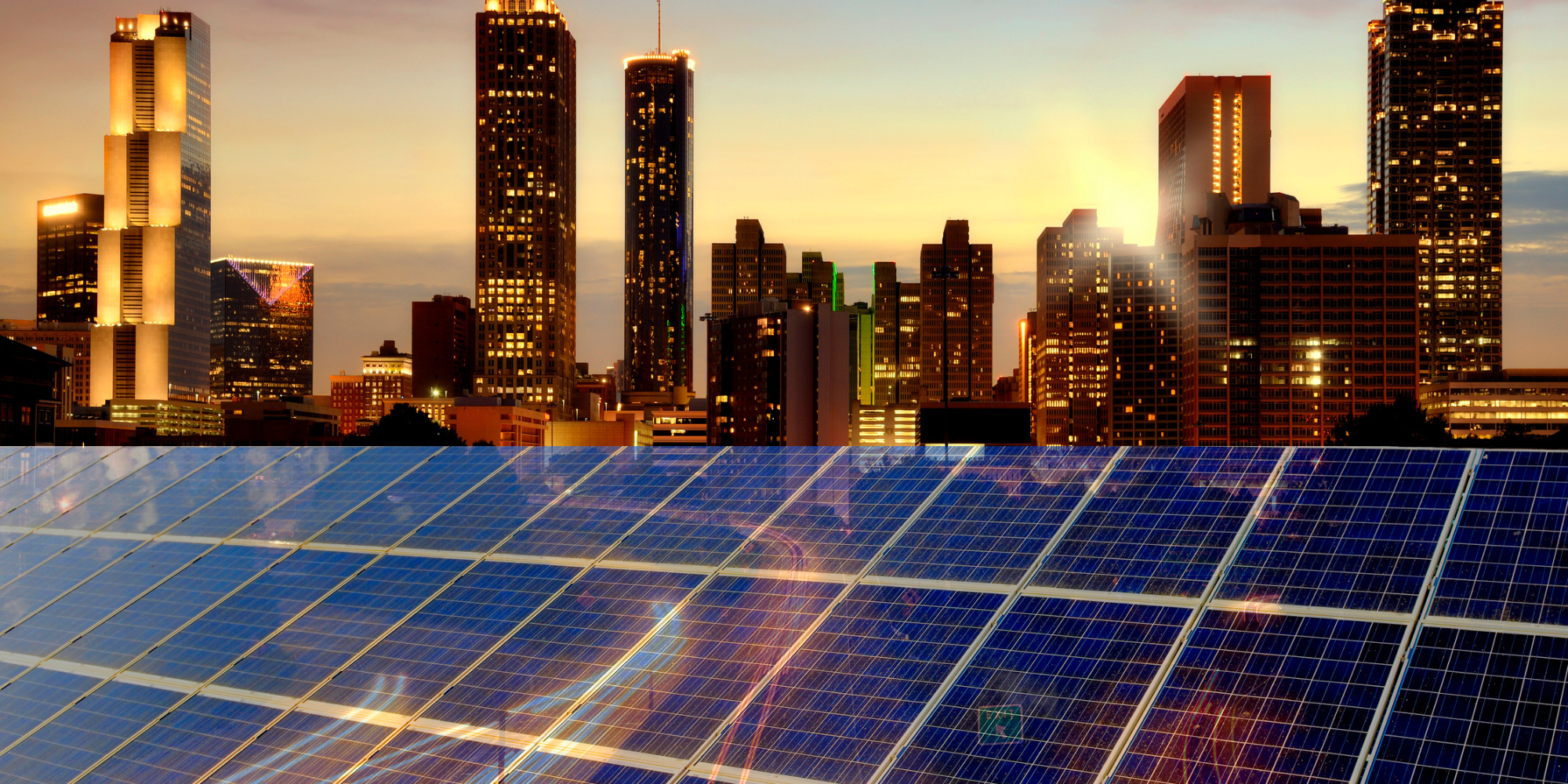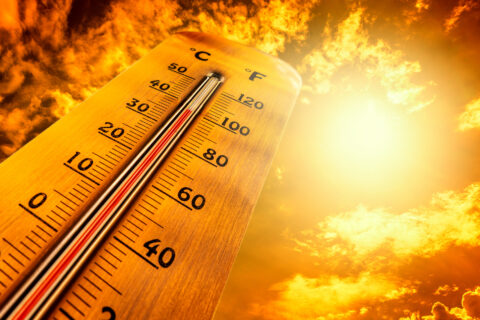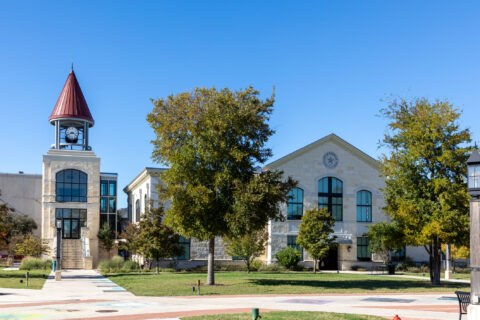Hundreds of cities across the United States have announced 100 percent renewable energy or carbon-neutrality goals. While setting a target is a critical first step, the next step is prioritizing and implementing energy projects to meet their goals efficiently. With unprecedented funding quickly becoming available from the Bipartisan Infrastructure Law (BIL) and the Inflation Reduction Act (IRA), city leaders need a more nimble, iterative planning process that can help them determine which energy actions to implement.
Here are two fundamental questions cities need to answer:
- Which facility types (e.g., office buildings, wastewater plants, airports, fire stations, etc.) should be prioritized?
- Which energy actions (e.g., electrification, energy efficiency, renewable energy procurement, etc.) should be prioritized?
To help local governments answer these questions and make progress toward their decarbonization goals, Rocky Mountain Institue (RMI) developed the Local Energy Action Framework (LEAF) in partnership with six local governments across the United States. LEAF is a step-by-step process that helps local governments map out current and future electricity needs holistically. Planning various decarbonization projects in isolation could lead to sub-optimal outcomes. For example, local governments might buy less renewable energy than they ultimately need if they do not consider the added demand that will come from electrifying buildings and vehicles. Or they could wind up generating massive peak loads, and thus inflating costs unnecessarily, if all their electric vehicle charging and heat pumps turn on at the same time.
By helping local governments compile the necessary data and develop holistic clean energy plans, LEAF helps cities and counties understand not only the impact of individual energy actions but also how each action will interact with others.
In line with local governments’ desire to support their own communities, a core principle of LEAF is to maximize local resources and investment first. Some examples are electrifying buildings and vehicles, upgrading streetlights with LED lighting, and installing on-site solar with battery storage, etc. These local solutions can increase the flexibility of local electricity systems, create local green jobs, reduce local greenhouse gas emissions and improve air quality.
Four Things City Leaders Need to Know to Reach Their Decarbonization Goals
Using the LEAF framework, RMI worked with Alexandria, VA, Ann Arbor, MI, Atlanta, GA, Boise, ID, Cincinnati, OH and Miami-Dade County, FL to identify the biggest electricity savings opportunities and evaluate how each energy action fits into the bigger picture. Building upon the data from these communities, here is what you need to know to start your own holistic clean energy planning:
1. Prioritizing energy efficiency improvements in facilities with the highest electricity demands leads to more energy savings.
Higher electricity usage often indicates greater potential for energy savings. Water and wastewater facilities are usually among the largest electricity users — accounting for up to 70 percent of city electricity usage. Some municipalities have therefore prioritized energy efficiency improvements in their water facilities. For example, the City of Gallup, NM, received a $2.2 million loan from the New Mexico Environment Department to upgrade its wastewater treatment plants and collection systems in coming years. The City projects that the annual cost savings from efficiency improvements can nearly cover annual loan payments.
Alternatively, local governments that operate a large airport, like Atlanta, may see that as the largest driver of demand. Other electricity loads, such as office space and outdoor lighting, often account for only a small fraction of overall usage, yet this can vary substantially between communities.
2. Electrifying heating and vehicle fleets can significantly decrease carbon emissions but will increase building load (excluding water facilities) by 5–17 percent annually.
Electrification has a notable impact on municipal carbon emissions reductions. According to RMI’s LEAF analysis, building and vehicle electrification could account for up to 52 percent of the total carbon emissions reductions resulting from all planned decarbonization efforts in these cities by 2030. However, the climate impact of electrification depends on how clean the grid is and will be in the future. Local governments should collaborate with local utilities to ensure the grid is decarbonizing in line with their decarbonization needs and timeline.
Meanwhile, building electrification, especially for heating systems, will significantly increase electricity demands for some local governments at certain times. For cities and counties in a cold climate zone, such as Boise, electrifying heating could increase their winter building load by 170 percent, and particularly drive load peaks in the early morning hours. The impact of building electrification will also tend to be higher for cities and counties that have more large office spaces. Local governments should therefore electrify buildings with efficient technologies, such as heat pumps, to mitigate the impact of increased load. For example, in 2022, New York City announced its plan to install 30,000 new heat pump units in municipal public housing facilities as part of the Clean Heat for All Challenge, which will reduce greenhouse gas emissions and provide public health benefits.
3. To move toward 24×7 clean electricity, flexible loads and batteries can help shift demand to hours of the day with lower electricity usage or when more renewable energy will be available.
Across all six communities who supported the LEAF tool development, 60–80 percent of their electricity consumption occurs between 5 p.m. and 8 a.m., when solar resources are limited, due to large overnight loads of water treatment plants and outdoor lights. To achieve a 24-hour clean electricity supply, cities and counties may need to shift the operating hours of some flexible loads from night to daytime. In addition, using batteries charged with solar resources allows municipal facilities to operate on clean energy in the evening. Although load shifting remains a relatively new concept for local governments, analyses have shown that it has significant potential to reduce carbon emissions from the building sector, as shown in a case study on demand flexibility in New York City.
Smart electric vehicle (EV) charging is a great example of how deploying flexible electricity loads can have a positive impact. Municipal vehicles such as garbage trucks typically only run in the early morning to avoid traffic, while others, like patrol cars, need to run throughout the day. Cities and counties should identify which types of vehicles can be charged flexibly and optimize EV charging time to avoid charging during peak demand hours or hours without a clean energy supply. The Sacramento Municipal Utility District (SMUD) has taken the first step by starting a managed EV charging pilot program to help residents charge their vehicles at times of day when energy demand is low to put less strain on the electricity grid and use more renewable energy.
4. Municipalities can purchase off-site renewable energy, especially non-solar resources, to fill the remaining gap.
Most local governments do not have enough roofs or local land space to deploy on-site solar to power all their operations. To achieve their 100 percent clean electricity goals, they will need to look to off-site solutions. Non-solar energy, including wind and geothermal resources, can be a good option to power large overnight loads such as streetlights and water facilities. For instance, Los Angeles, CA, announced in 2020 that it would purchase 331 MW of renewable energy from a new wind farm in New Mexico to power its municipal operations, which is one of the largest wind deal ever signed by a US city. The Qawalangin Tribe of Unalaska, AK, received more than $2 million in federal dollars in 2022 to source geothermal energy from an active volcano. Just like Los Angeles and Unalaska, most US cities and counties will need to procure renewable energy through an off-site power purchase agreement (PPA), virtual PPA, and/or green tariff to fill the gap efficiently.
For many city leaders at the starting line of the decarbonization journey, the insights derived from LEAF can jump-start decarbonization planning in addition to saving time and money during implementation. Other resources include RMI’s LEAF webinar, their PowerPoint guide, Federal Funding Opportunities for Local Decarbonization (FFOLD),and Funding Guidance.
About the Authors
Written in collaboration with Jingyi Tang and Yuning Liu of the Rocky Mountain Institute.









